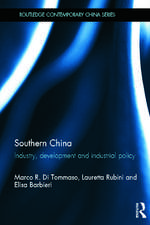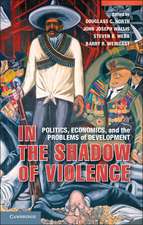Implementing Environmental Accounts: Case Studies from Eastern and Southern Africa: Eco-Efficiency in Industry and Science, cartea 28
Editat de Rashid M. Hassan, Eric D. Mungatanaen Limba Engleză Paperback – 29 ian 2015
| Toate formatele și edițiile | Preț | Express |
|---|---|---|
| Paperback (1) | 637.59 lei 6-8 săpt. | |
| SPRINGER NETHERLANDS – 29 ian 2015 | 637.59 lei 6-8 săpt. | |
| Hardback (1) | 647.40 lei 6-8 săpt. | |
| SPRINGER NETHERLANDS – dec 2012 | 647.40 lei 6-8 săpt. |
Din seria Eco-Efficiency in Industry and Science
- 9%
 Preț: 901.52 lei
Preț: 901.52 lei - 18%
 Preț: 951.29 lei
Preț: 951.29 lei - 15%
 Preț: 640.24 lei
Preț: 640.24 lei - 15%
 Preț: 654.77 lei
Preț: 654.77 lei - 15%
 Preț: 648.42 lei
Preț: 648.42 lei -
 Preț: 391.61 lei
Preț: 391.61 lei - 15%
 Preț: 642.51 lei
Preț: 642.51 lei - 15%
 Preț: 643.34 lei
Preț: 643.34 lei - 18%
 Preț: 957.62 lei
Preț: 957.62 lei - 18%
 Preț: 953.35 lei
Preț: 953.35 lei - 18%
 Preț: 1238.74 lei
Preț: 1238.74 lei - 18%
 Preț: 1224.68 lei
Preț: 1224.68 lei - 18%
 Preț: 963.15 lei
Preț: 963.15 lei - 18%
 Preț: 2115.07 lei
Preț: 2115.07 lei - 18%
 Preț: 1388.53 lei
Preț: 1388.53 lei - 18%
 Preț: 1855.88 lei
Preț: 1855.88 lei - 18%
 Preț: 1234.94 lei
Preț: 1234.94 lei - 15%
 Preț: 643.00 lei
Preț: 643.00 lei - 15%
 Preț: 647.40 lei
Preț: 647.40 lei - 18%
 Preț: 1222.01 lei
Preț: 1222.01 lei - 15%
 Preț: 648.42 lei
Preț: 648.42 lei - 15%
 Preț: 646.62 lei
Preț: 646.62 lei - 15%
 Preț: 645.79 lei
Preț: 645.79 lei - 20%
 Preț: 590.94 lei
Preț: 590.94 lei
Preț: 637.59 lei
Preț vechi: 750.11 lei
-15% Nou
Puncte Express: 956
Preț estimativ în valută:
121.100€ • 127.72$ • 100.95£
121.100€ • 127.72$ • 100.95£
Carte tipărită la comandă
Livrare economică 07-21 aprilie
Preluare comenzi: 021 569.72.76
Specificații
ISBN-13: 9789400796744
ISBN-10: 9400796749
Pagini: 240
Ilustrații: XX, 220 p.
Dimensiuni: 155 x 235 x 13 mm
Greutate: 0.34 kg
Ediția:2013
Editura: SPRINGER NETHERLANDS
Colecția Springer
Seria Eco-Efficiency in Industry and Science
Locul publicării:Dordrecht, Netherlands
ISBN-10: 9400796749
Pagini: 240
Ilustrații: XX, 220 p.
Dimensiuni: 155 x 235 x 13 mm
Greutate: 0.34 kg
Ediția:2013
Editura: SPRINGER NETHERLANDS
Colecția Springer
Seria Eco-Efficiency in Industry and Science
Locul publicării:Dordrecht, Netherlands
Public țintă
GraduateCuprins
1. Natural Capital, Total Wealth and Sustainable Development in Nambia.- 2. Wildlife accounts.- 3. Accounting for Mineral Resources in Tanzania.- 4. Fisheries Resource Accounts for the Maputo Coastal Districts of Mozambique.- 5. Forest Resoure Accounts for Ethiopia.- 6. Contribution of Uganda’s Forestry Sub-Sector to the National Economy.- 7. Accounting for the Value of Ecosystem Assets and their Services.- 8. Valuing Regulating and Supporting Ecosystem Services in the Sub-Tropical Estuaries of Kwazulu-Natal in South Africa.- Index.
Textul de pe ultima copertă
This report on natural resource and environmental accounting in one of the world’s least developed zones is predicated on a wealth approach to sustainable development that recognizes the need for information on all of a nation’s assets, including, for example, potable water, as well as how these might change or evolve over time. Under these criteria, a nation that manages its natural wealth intelligently may actually increase its net natural assets. Namibia’s wildlife reserves have an ongoing and evolving value far in excess of their commodity value as a source of meat, or even of ivory. Thus, this volume assesses how effectively polities in southern and eastern Africa have implemented the more complex set of metrics that make up the UN’s Integrated System of Environmental and Economic Accounts (SEEA), which replaced the former System of National Accounts—a measure of production alone.
Leaving aside human and social capital for a future volume, the book should be viewed as a crucial first step in developing indicators for total wealth in the countries covered by the case studies, which include Kenya, Uganda, Tanzania, Ethiopia, Mozambique and South Africa. These case studies experiment with implementing the SEAA in sub-Saharan nations known to suffer from the ‘resource curse’: their wealth in resources and commodities has allowed inflows of liquidity, yet this cash has not funded crucial developments in infrastructure or education. What’s more, resource-driven economies are highly vulnerable to commodity price mutability. The new measures of wealth deployed here offer more hope for the future in these countries than they themselves would once have allowed for.
Leaving aside human and social capital for a future volume, the book should be viewed as a crucial first step in developing indicators for total wealth in the countries covered by the case studies, which include Kenya, Uganda, Tanzania, Ethiopia, Mozambique and South Africa. These case studies experiment with implementing the SEAA in sub-Saharan nations known to suffer from the ‘resource curse’: their wealth in resources and commodities has allowed inflows of liquidity, yet this cash has not funded crucial developments in infrastructure or education. What’s more, resource-driven economies are highly vulnerable to commodity price mutability. The new measures of wealth deployed here offer more hope for the future in these countries than they themselves would once have allowed for.
Caracteristici
A unique exercise in environmental accounting in eastern and southern Africa, where governments have been slow to implement SEAA standards Provides empirical data for the sustainable value of minerals, forestry, fisheries, and water as well as the indirect (regulating) services of estuaries Explains the links between environment and development and, uniquely, integrates policy applications and compilation methodology of environmental accounting Shows how to synthesize environmental and national accounting data Explains how to deploy environmental accounts as a planning tool











